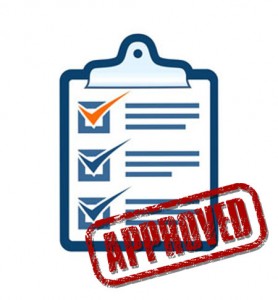If you are looking at launching a corporate blog for SEO purposes, you likely understand that the quality of the writing is critical to its success. You need to move beyond bland SEO copywriting and create content that is unique, educational and helps readers understand the industry that your business is in. But having a successful corporate blog is about more than just the content. Much of your blog’s success will depend on the four steps you take before you write a single word of copy.

Branding: You want your blog to be memorable so that people come back to it. Along with creating compelling content, you can do this with the branding of your blog. Come up with a creative name that goes beyond COMPANY NAME Blog. Create a logo that is fun and will tell readers what to expect from your blog. Use color schemes in the design that are eye-catching (and match your corporate branding if you do this). You can often do this while choosing the theme of your blog if you are using a popular blogging service such as WordPress.
Develop a Content Strategy: Depending on your line of business, you might be overwhelmed with potential blog post ideas or trying to figure out how to create content on a regular basis. Having a content strategy in place from the beginning will help you determine the right topics to pursue with your writing. Do research on the content already on your site to see what topics, keywords or types of content is most popular with your visitors. You can use this as a guide to help you determine where to focus your blog writing energy.
Build Social Media Hooks Into Your Blog: If you want your blog posts to spread and potentially “go viral,” you need to give readers a way to share them. Making it easy for readers to share links to your blog posts via social media outlets like Twitter, Facebook and Reddit is a must. Make sure that every post ends with a way for people to share your story with one click – there are several services you can use to automatically generate this at the end of each post. It’s also important to give readers a way to subscribe to your blog so they automatically receive new blog posts.
Set the Tone of Your Blog: As much of the success of your blog will come down to how you say something versus what exactly you are saying. The tone of your blog should match the expectations of your readers. If your company is a retail business selling fun items, you can have a quirky, humorous tone that will get people to laugh. Blogs that are aimed toward a more technical audience will need to be drier and be straightforward. No matter what your tone is, the blog needs to provide useful and educational information about your products and your industry.
Nothing is more frustrating than spending weeks or even months to redesign your website, only to see traffic plummet soon after the new version of the site goes live. It’s especially frustrating because you obviously did all the work because you expected to improve your search engine ranking, get more traffic and see more conversions. Where did it all go wrong?

In most cases, there is no single culprit; it’s usually a series of small mistakes that, on their own, would create minimal damage to your traffic but when taken together can be disastrous. Here are four of the most common problems we’ve found at eVisible when people try to relaunch their sites and their traffic tanks:
Check Google Analytics
It’s possible that your site’s analytic tracking didn’t automatically restart when your new site was launched. Manually check Google Analytics to make sure that it’s enabled and working properly; if it isn’t, check individual pages for issues like missing tracking code placement.
Recheck Google Analytics
You can also go deeper with your analytic research to see if there are unforeseen problems. Make sure that you have 301 redirects for any pages whose address structures have changed and thoroughly look for any 404 pages. Do a keyword search to see which keywords are underperforming and if they have been removed from poorly performing pages.
Review Your robots.txt File
It’s possible that your site has been deindexed for some reason. One possible explanation is with your robots.txt file. Check the head of page source code for a meta robots tag exclaiming noindex and also check for anything that says “disallow:/” in the code.
Check for Host or Server Issues
Changing your hosting or server can lead to communications issues that will make it impossible for search engines to index your site. There are several tools available for checking your DNS health; one thing you absolutely should do is look at your DNS errors and server connectivity in your Google or Bing Webmaster Tools.
Acquiring links is a valuable tool that should be a part of any SEO campaign. SEO link building services allow you to extend the reach of your brand beyond your website while increasing your site’s credibility in the eyes of major websites such as Google. However, you need to be careful when it comes to managing your link building campaign. Not enough people realize the importance of backlinks monitoring and how much damage that poorly managed links can do to your SEO reputation.

Google and other sites will punish sites if they have links on their website that have been changed or deleted within a short time frame; for the search engines, this is a clear signal that these links have been collected in unnatural ways. The best method of building link popularity is through natural links that appear to the result of other sites posting your links because of the high-quality content that exists on your pages. When a link partner suddenly deletes or changes your links at the same time, this is flagged as a potentially unnatural behavior by Google and could impact your site ranking.
You need to be willing to check your links on a regular basis to make sure that your link partners are keeping your links up and holding up their end of the bargain. In some cases, links can be deleted because the owner of another website has deleted a page on their site and accidentally forgot to move the link; in other cases, the partner might have deleted the link after a short period of time to make room for new links.
Manually checking backlinks one time a day or more is time consuming. One way to work around this is to automate the process with one of the many SEO tools available that do backlink checking. You can purchase and use one of these tools yourself, or you can work with an SEO company like eVisible who can do it for you. Once you’ve determined which links have been deleted or changed, you need to act on it by contacting your partner and convincing them to live up to their end of your deal and restore your link.
 Posted on October 21, 2013
Posted on October 21, 2013
 Posted on September 12, 2013
Posted on September 12, 2013
